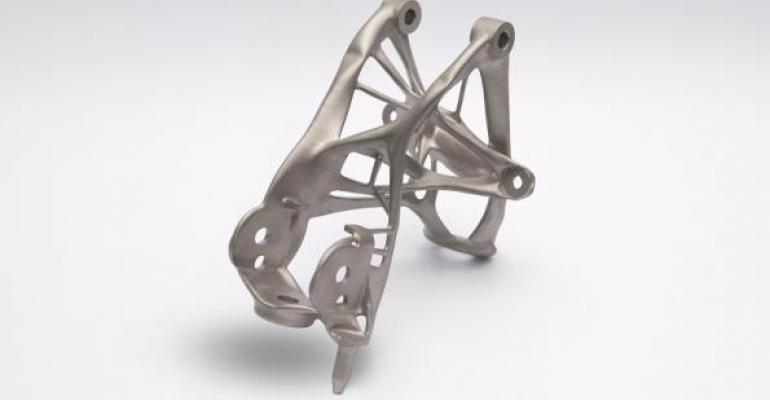WARREN, MI – General Motors begins using cloud computing and artificial intelligence to engineer lighter-weight vehicles, an advanced software-design technology the automaker considers essential to developing efficient alternative-propulsion and zero-emissions cars and trucks.
GM says it is the first automaker in North America to use the new generative-design technology from the Bay Area software company Autodesk, a longtime supplier of desktop design and engineering solutions to the global automotive business.
An emerging technical field, generative design mimics nature’s evolutionary approach to design, providing options beyond what a human alone could create.
“This disruptive technology provides tremendous advancements in how we can design and develop components for our future vehicles to make them lighter and more efficient,” GM Vice President Ken Kelzer says in statement ahead of showing the technology to journalists at the automaker’s R&D campus here.
“When we pair the design technology with manufacturing advancements, such as 3D printing, our approach to vehicle development is completely transformed and is fundamentally different to co-create with the computer in ways we simply couldn’t have imagined before,” says Kelzer, who heads global vehicle components and subsystems for the automaker.
According to GM, the technology combines cloud computing and AI-based algorithms to quickly explore multiple permutations of a part design, generating hundreds of high-performance, often organic-looking geometric design options based on goals and parameters set by the user. Parameters could include weight, strength, material choice and fabrication method among many others. The user determines the best part design option.
The technique provides GM with opportunities to reduce vehicle mass and consolidate parts it otherwise could not achieve through traditional design-optimization methods, the automaker says.
GM has yet to use the approach, which is part of multiyear alliance between the Detroit automaker and Autodesk, in a production vehicle but is employing it for future-product designs. The automaker last year unveiled an aggressive path to zero emissions, beginning with 20 new all-electric vehicles by 2023. Those vehicles will require lighter-weight parts and components to optimize electrified driving range, driving performance and to retain the roominess and convenience car buyers expect.
GM already has made significant strides shedding weight from its historically heavier vehicles relative to others in the industry, including 14 new cars and trucks since 2016 with a total mass reduction of more than 5,000 lbs. (2,268 kg), or more than 350 lbs. (159 kg) per vehicle. The beefy new Chevy Silverado large pickup even loses weight with its ’19 redesign, dropping 450 lbs. (204 kg).

The slenderizing likely will continue with the Autodesk technical collaboration on projects involving generative design, additive manufacturing and materials science, GM says. Executives and engineers from the two companies will participate in a series of onsite engagements to exchange ideas, learnings and expertise. GM also has on-demand access to Autodesk’s full portfolio of software and technical specialists, the automaker says.
Details of the contract were not disclosed.
One breakthrough already may have been made. Engineers from both sides recently applied their new technology to produce a proof-of-concept seat bracket that is 40% lighter and 20% stronger than the original part, GM says. It also consolidates eight components into a single 3D-printed part.
Scott Reese, senior vice president-Manufacturing and Construction Products, at Autodesk, says generative design is the future of manufacturing.
“Generative technologies fundamentally change how engineering work is done because the manufacturing process is built into design options from the start,” he says. “GM engineers will be able to explore hundreds of ready-to-be-manufactured, high-performance design options faster than they were able to validate a single design the old way.”





